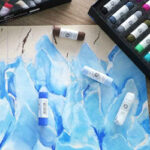5 Ways to Improve Your Drawing Skills
Try these Tips When Putting Pencil to Paper
Have you ever wanted to learn to draw better? Get bogged down hitting the same roadblocks over and over again? Think only repetitive practice makes perfect?
Guess again! While it is true that practice will make you a better drawer or sketcher, these 5 simple tricks will improve your drawing skills quicker and improve your perception to better see what your drawing.

1. Make a Grid
This is especially important if you suffer from not being able to proportion out your sketches properly. While keeping your proportions straight for more realistic images, measuring out a square grids can keep you in check. One effective tool to help with proportions is a View Finder
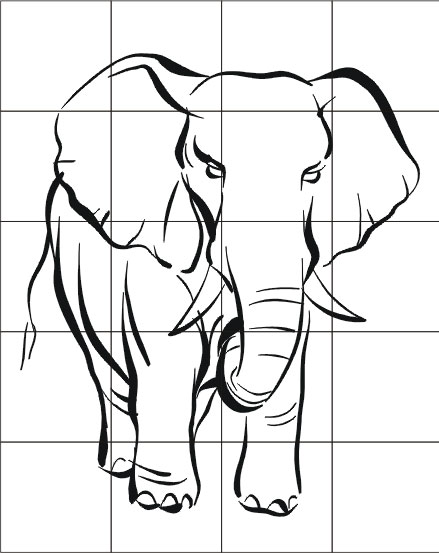
First measure out a square grid over the image you plan on copying on your own paper, then copy that same grid with the same measurements onto your drawing paper or sketch pad and then simply try to draw that identical image from square to square.
This trick also makes the image as a whole less daunting and intimidating by breaking down the different sectors. If your image paper and your sketch paper are the same size, then the image you create on your grid should match up.
If you use a light shaded pencil on your grid, you should be able to erase them later with a great eraser like the Vanish 4-in-1 Artist Eraser.
2. Build Out your Sketches with Shapes
If you have trouble with complicated subject matter such as animals, people or random items, then start out by breaking down your subjects with basic shapes and draw them onto your paper before tackling the more complicated aspects of your drawing.
Start with basic shapes: Begin by drawing basic shapes such as circles, squares, triangles, rectangles, and ovals. These shapes are the building blocks for more complex drawings.
Draw lightly and then you can erase and replace the big shapes with more defined lines as you continue to sketch the fine details. This will help ease the frustration of getting bogged down on small details while helping you gain perspective on the general form.
See the video below for more instruction on How To Draw Using Shapes
3. Try Gestural Motion Drawings
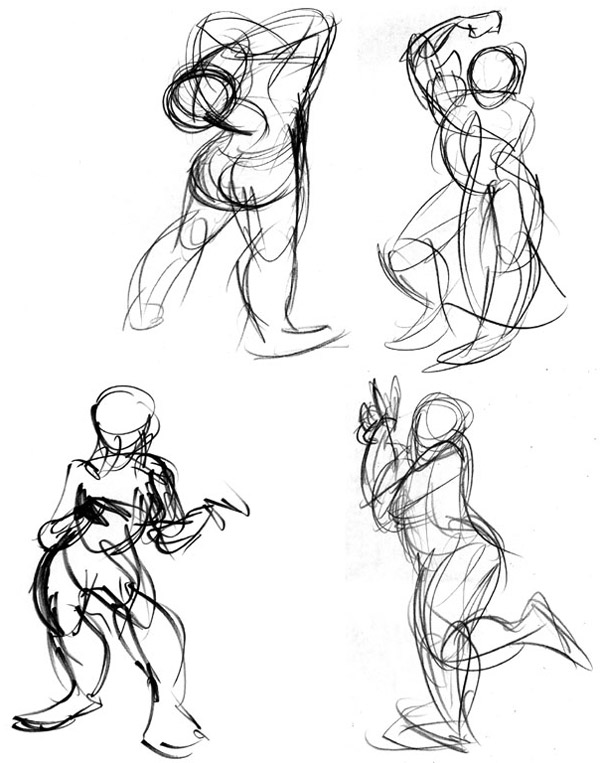
We have covered this one before in our previous article, Practice Drawing with Gesture Motion Drawing, but this technique really can improve your drawing quickly. By capturing motions of people or animals, you can quickly gain a comprehensive perspective of how different forms, bodies and muscles move and react in motion.
Spend less than 2 minutes visualizing and drawing the motion of something that interests you disregarding details and focusing only on form.
This will help you in the future visualize how different bodies move in motion and and loosen up drawings and portraits. By getting a better idea of a base form, you wont be restricted to sketches that look stiff, boxy or contrived.
4. Switch Up your Drawing Supplies
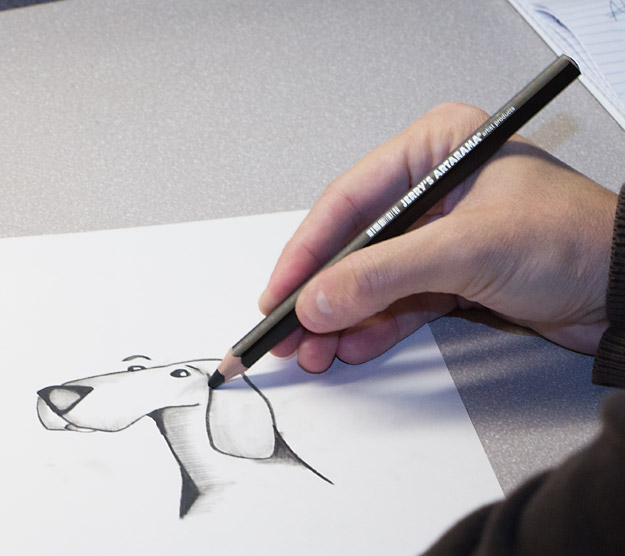
Sometimes the medium you prefer most such as pen or charcoal can be a bit restrictive.
By changing up your drawing medium every now and again, you can find that you can achieve new effects or styles of drawing. If you are tired of drawing with ball-point pen, try a large pencil like Jerry’s Jumbo Jet Black Pencil for a softer, blended effect on your sketches.
We highly recommend you try and use graphite pencils that are specifically designed for drawing and sketching purposes. They are made with high-quality graphite cores and come in a range of hardness levels, allowing artists to create a variety of effects and achieve different levels of darkness in their drawings.
They are great for Composition, Hardness and Softness, Blending and Shading, Erasability, Techniques, Sharpening and come in a various degrees of hardness and softness. We recommended the Cezanne Graphite Pencils collection as it has degrees up to 12B – Pencil degrees include 2H (hardest and lightest), H, HB, B, 2B, 3B, 4B, 5B, 6B, 8B, 10B and 12B (super dense, soft and dark)
Or if you use a dull number 2 pencil when you sketch, try using a sharp technical pen for crisp sharp lines that will give your drawing a more technical and refined style.
You may even find that you like one style over the other!
5. Draw Everywhere
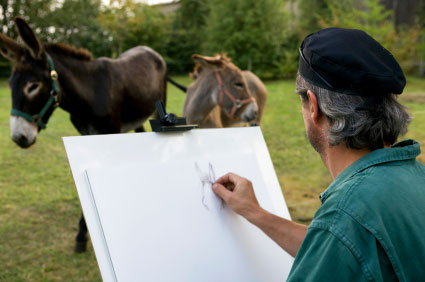
Get out there! Draw in your free time wherever you are. Draw on the bus, the train, at lunch, when you wake up and before you go to bed. I know this sounds a lot like “practice makes perfect” and technically it is. But by varying up your subjects, where you draw and when you draw, you can learn a lot about the different ways you draw.
Maybe, you can draw better in the morning when you feel more organized. However, you might find that you can sketch better in the evening when you’re a bit more relaxed and unwinding from the day. It’s possible you can be more inspired drawing from real life than from a printed out picture or photograph. You can only learn these things by constantly drawing and gaining new experiences.
As your experience grows and your drawing subjects vary more and more, you will get better, I promise you that!
More Resources




